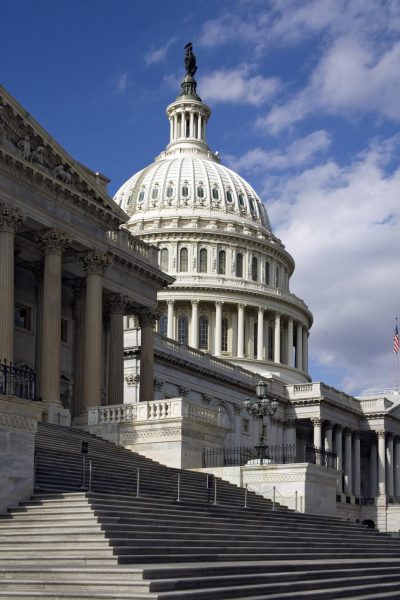The Biden Administration announced a number of changes to the U.S. environmental policy, some of which will affect AE2S clients. AE2S has reviewed these announcements, as well as pertinent published plans and cabinet appointments in detail to provide a summary of what to expect from the new Federal Administration.
Lead and Copper Rule
The U.S. Environmental Protection Agency (USEPA) released the prepublication version of the Lead and Copper Rule (LCR) Revisions to the public in late 2020. These revisions have not yet been published in the Federal Register, and as such are currently part of the regulation freeze from the Biden Administration. The LCR revisions were set to take effect on March 16, 2021; however, it is not yet clear how the freeze will affect this schedule. A detailed summary of these revisions as well as what municipalities and other regulated industries will need to do will be provided in The Update newsletter after the regulation freeze has been lifted and modifications, if any, are made available.
Utility Bill Relief
With the COVID-19 crisis, multiple moratoriums on utility shutoffs due to non-payment have taken effect over the last year. This has put a strain on utilities that rely on utility fees to balance their budget and fund system improvements. In light of this, the latest COVID relief package, which passed in December 2020, includes an extension of the Coronavirus Relief Fund to December 31, 2021 and $638 million for payment of delinquent water bills from low-income water and wastewater customers. The funds will be allocated to States based on the percentage of their population paying more than 30% of their income on housing and the percentage that is 150% below the poverty line. The States will then distribute funds to individual utilities. This will likely require utilities to report the number of low-income customers with late bills to the State.
PFAS
The Biden Administration and the USEPA made a number of announcements regarding per– and polyfluoroalkyl substances (PFAS). Plans are in place to set a maximum contaminant level (MCL) and National Primary Drinking Water Regulation (NPDWR) for perfluorooctanoic acid (PFOA) and perfluorooctane sulfonate (PFOS), with other PFAS compounds being reviewed. Actions towards setting MCL values are expected to begin this year. The MCLs are anticipated to affect not only drinking water but also wastewater through discharge permits and biosolids limitations.
PFAS compounds are also expected to be designated “hazardous substances” through the Comprehensive Environmental Response, Compensation and Liability Act (CERCLA). A hazardous substance designation will allow the USEPA to force PFAS producers or dischargers to pay for cleanup efforts personally, rather than the USEPA paying up front and seeking reimbursement through the legal system. A superfund designation will also allow utilities that have to treat water for PFAS or deal with the disposal of PFAS-laden sludge or biosolids to force the organization that caused the PFAS pollution to pay for any costs related to clean-up or treatment of the PFAS compounds. The military will need to clean up any PFAS compounds on military sites or bases. It will also be easier for the USEPA to set reporting requirements for PFAS activity and environmental discharge.
Climate Change
Climate change has been described as an “existential threat” by President Biden. As such, a major portion of changes expected from the Biden Administration pertain to climate change. President Biden signed an Executive Order to bring the U.S. back into the Paris Climate Accord, which is an international pact to keep global warming to under 2°C through greenhouse gas emission reduction and related limitations.
An Executive Order has also been signed to revoke the permit for the Keystone XL pipeline, with objection from members of Congress and Canadian Prime Minister Justin Trudeau. Though controversial, this revocation is expected to stand, effectively ending the project. The effect this will have on the oil and gas industry is not yet clear. Part of lowering greenhouse gas emissions is expected to include heighted methane emission tracking and limit enforcement for industries and utilities.
Oil and Gas Drilling Permit Changes
President Biden’s nominee for the Department of Interior (DOI), Rep. Deb Haaland, will be the 1st Native American to hold the position should she be confirmed. Rep. Haaland is a strong supporter of the Green New Deal, and DOI policies are expected to reflect this. New permits for drilling on public land and offshore are expected to be banned under the Biden Administration, and each current lease will be “reviewed” by DOI staff, though this has not been further clarified. The drilling lease for Alaska’s Artic National Wildlife Refuge has already been revoked, halting oil and gas activities in the area. Rep. Haaland and the Biden Administration have announced plans to make 30% of U.S. land and water reserves for conservation to limit climate change. Specific details have not yet been announced.
The shift in regulation and energy policies will have an impact on public utilities and industry. AE2S remains committed to tracking regulatory information and will continue to provide condensed summaries in future issue of The Update newsletter. Should you have any questions regarding this summary, or any other policy or regulatory developments, please contact Dr. Meghan Brockman.

